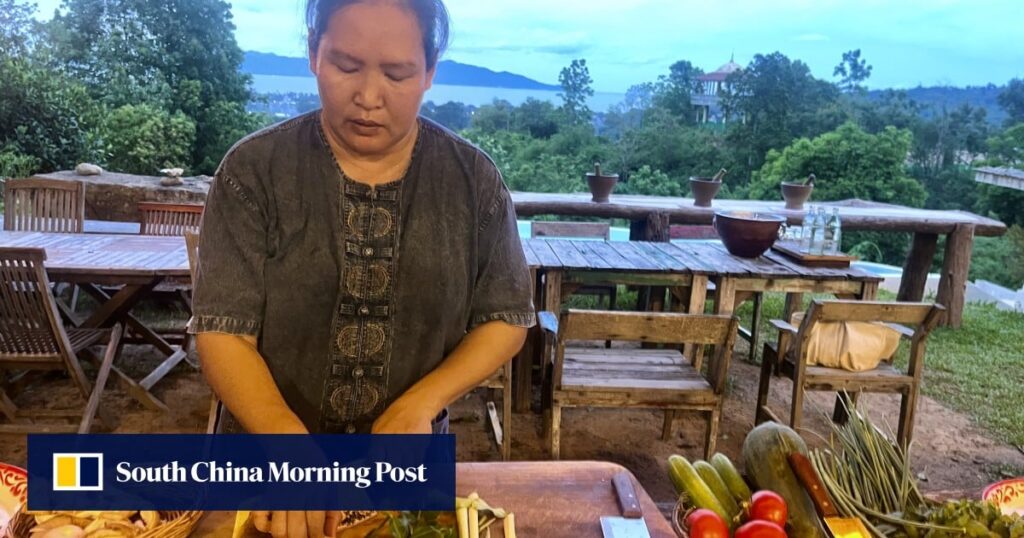What sets Jungle Kitchen apart from other cooking classes is that it uses traditional cooking methods, cooking food over charcoal, with electricity only being used for lighting.
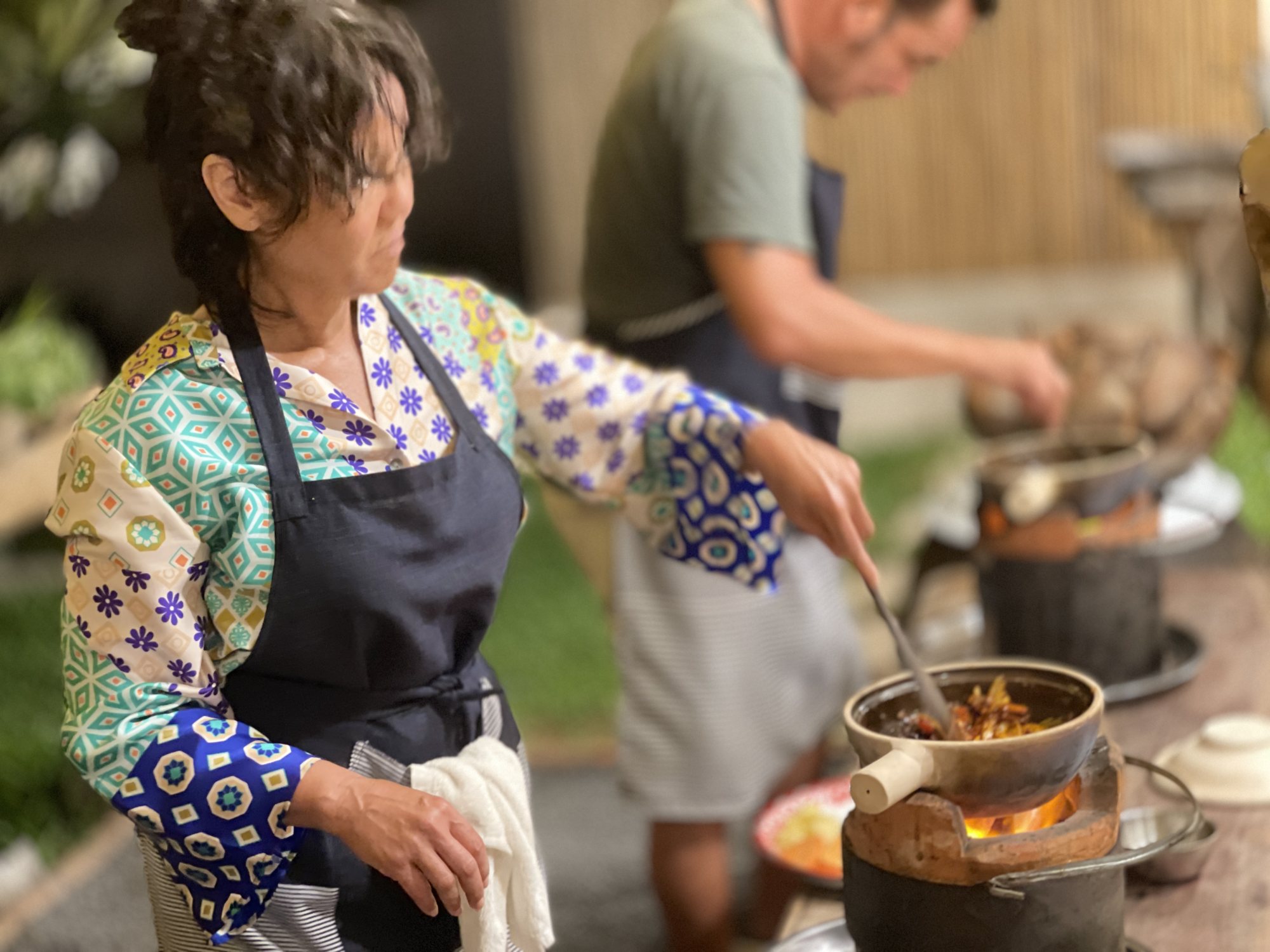 A Jungle Kitchen customer cooks food over a charcoal fire. Photo: Jungle Kitchen
A Jungle Kitchen customer cooks food over a charcoal fire. Photo: Jungle Kitchen
On a muggy June day, Charlesworth welcomes guests (up to eight) with ice-cold water infused with fresh passion fruit, then leads them around the grounds while his partner gathers ingredients for the dish.
“The garden is abnormally dry,” he says.
Despite the recent drought, the harvest has been surprisingly bountiful: Hidden among the banana, papaya, avocado and jackfruit trees are basil, chillies, lemongrass, coriander, chives and galangal, a ginger-like herb essential to Thai cooking.
There are tiny eggplants, also known as pea eggplant (ma kwae puan), a staple in Thai cuisine, and in a dark, damp corner grows oyster mushrooms, a fungus that is rich in nutrients such as fiber, vitamins and minerals and is a key ingredient in authentic Thai cooking.
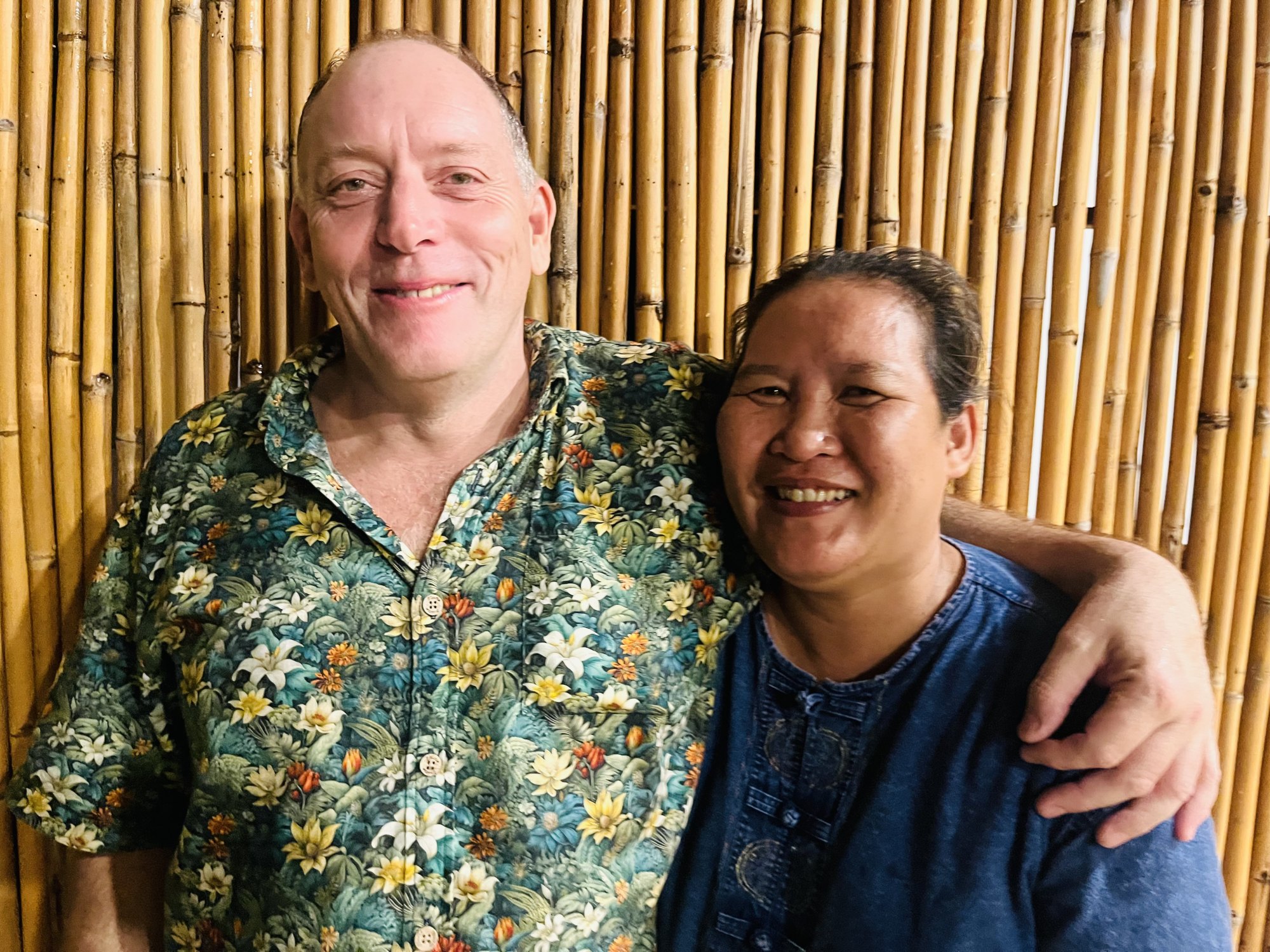 Lynn Rattana and her partner Tom Charlesworth run the Jungle Kitchen cookery school. Photo: Kylie Knott
Lynn Rattana and her partner Tom Charlesworth run the Jungle Kitchen cookery school. Photo: Kylie Knott
Fallen papaya leaves also have their uses: the stems are perfect for straws, he says.
Sustainability is key at Jungle Kitchen, so nothing is wasted – even the plates and bowls are plastic-free.
“This elephant dung that we use as fertiliser comes from a nearby conservation area, and the elephants eat it, so the pumpkins grow,” Charlesworth says. “You can hear the elephants sometimes.”
The lush environment, where Sashimi the cat and Nemo the rescue dog scurry about to the sounds of frogs and cicadas, is a stark contrast to the decades he spent traveling the world as an energy trader.
At the time, his hometown was Hong Kong: his mother still lives there, and until five years ago he was co-owner of The Gallery, a restaurant on the southern side of Lantau Island, Hong Kong’s largest island.
 Fresh ingredients at Jungle Kitchen, some from the culinary school’s garden. Photo: Jungle Kitchen
Fresh ingredients at Jungle Kitchen, some from the culinary school’s garden. Photo: Jungle Kitchen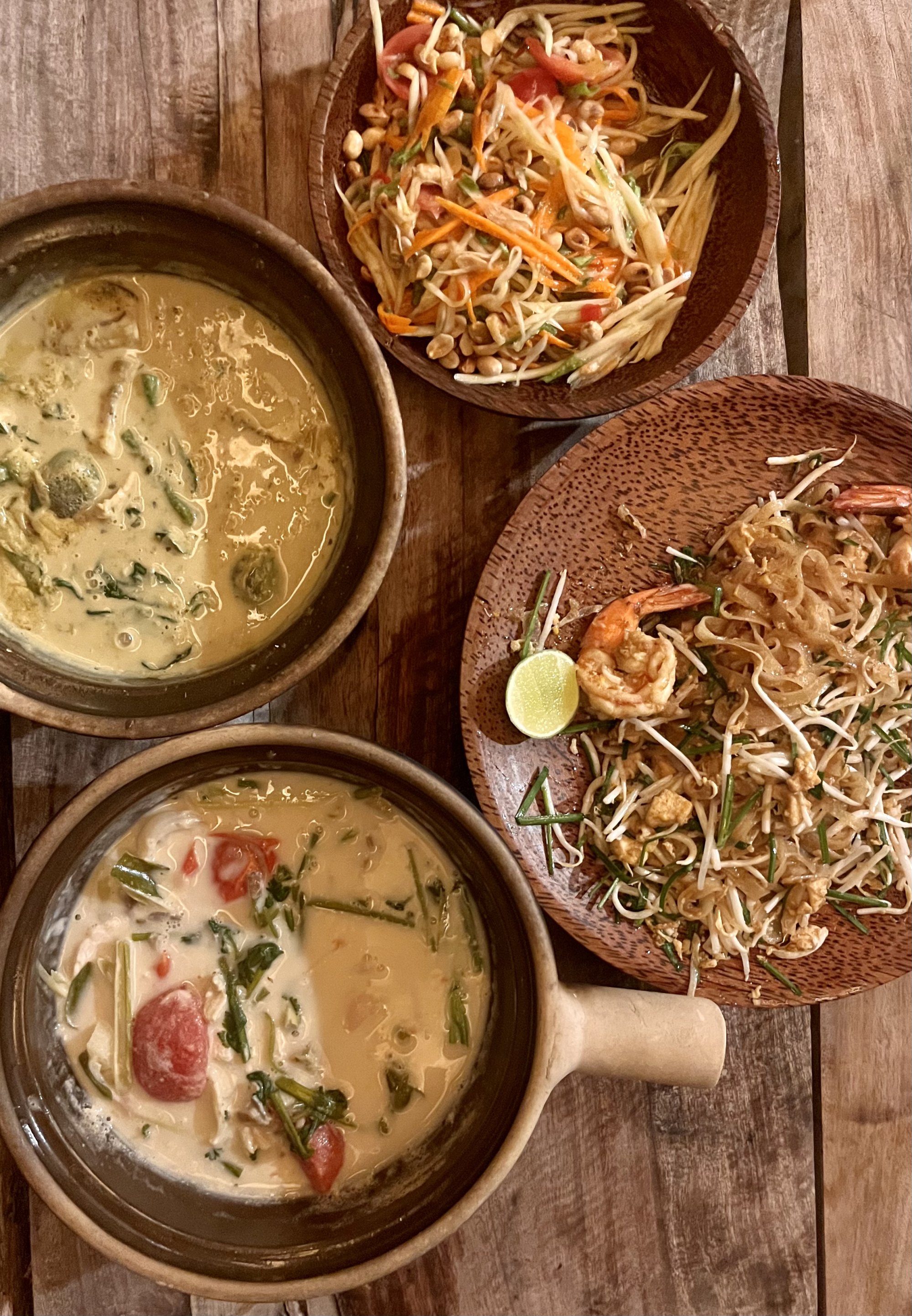 Thai dishes taught at Jungle Kitchen include (from top) som tam (spicy papaya salad), gaeng khao wan (green curry), pad thai with shrimp, and tom kha gai (coconut and galangal soup). Photo: Kylie Knott
Thai dishes taught at Jungle Kitchen include (from top) som tam (spicy papaya salad), gaeng khao wan (green curry), pad thai with shrimp, and tom kha gai (coconut and galangal soup). Photo: Kylie Knott
Guests visiting Jungle Kitchen from Hong Kong will feel right at home surrounded by kitchenware commonly seen around the city, including the iconic vintage red-and-white enamel plates, chicken-patterned bowls and old-fashioned stackable lunchboxes.
Most striking in the rustic-chic décor are the wooden tables and chairs recycled from longtail boats, traditional Thai watercraft that today are mainly used to transport tourists.
“The guest aprons were made by my mother,” says Lin, who sold pre-made meals under the comically named Fork-It before founding Jungle Kitchen.
Koh Samui is a popular holiday spot for Hong Kongers, just 3.5 hours away by direct flight from the city, and Jungle Kitchen is the perfect place for anyone wanting to learn traditional Thai cooking techniques.
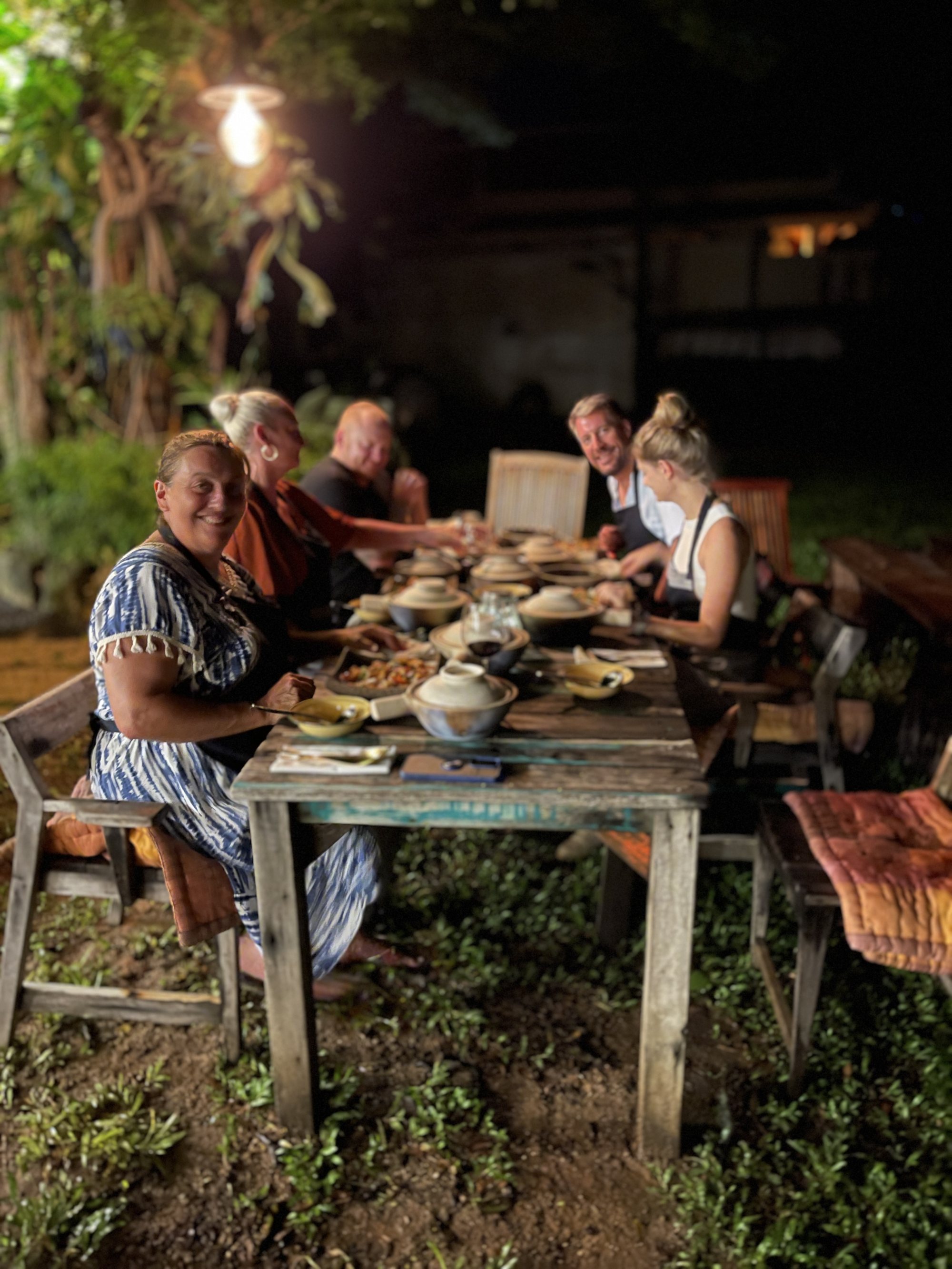 The Jungle Kitchen’s tables and chairs are made from repurposed longtail boats. Photo: Jungle Kitchen
The Jungle Kitchen’s tables and chairs are made from repurposed longtail boats. Photo: Jungle Kitchen
The island is also home to a number of top-notch restaurants, and if you’d prefer to have food delivered to your table, here are some seafood-focused restaurants.
Fish House Restaurant & Bar
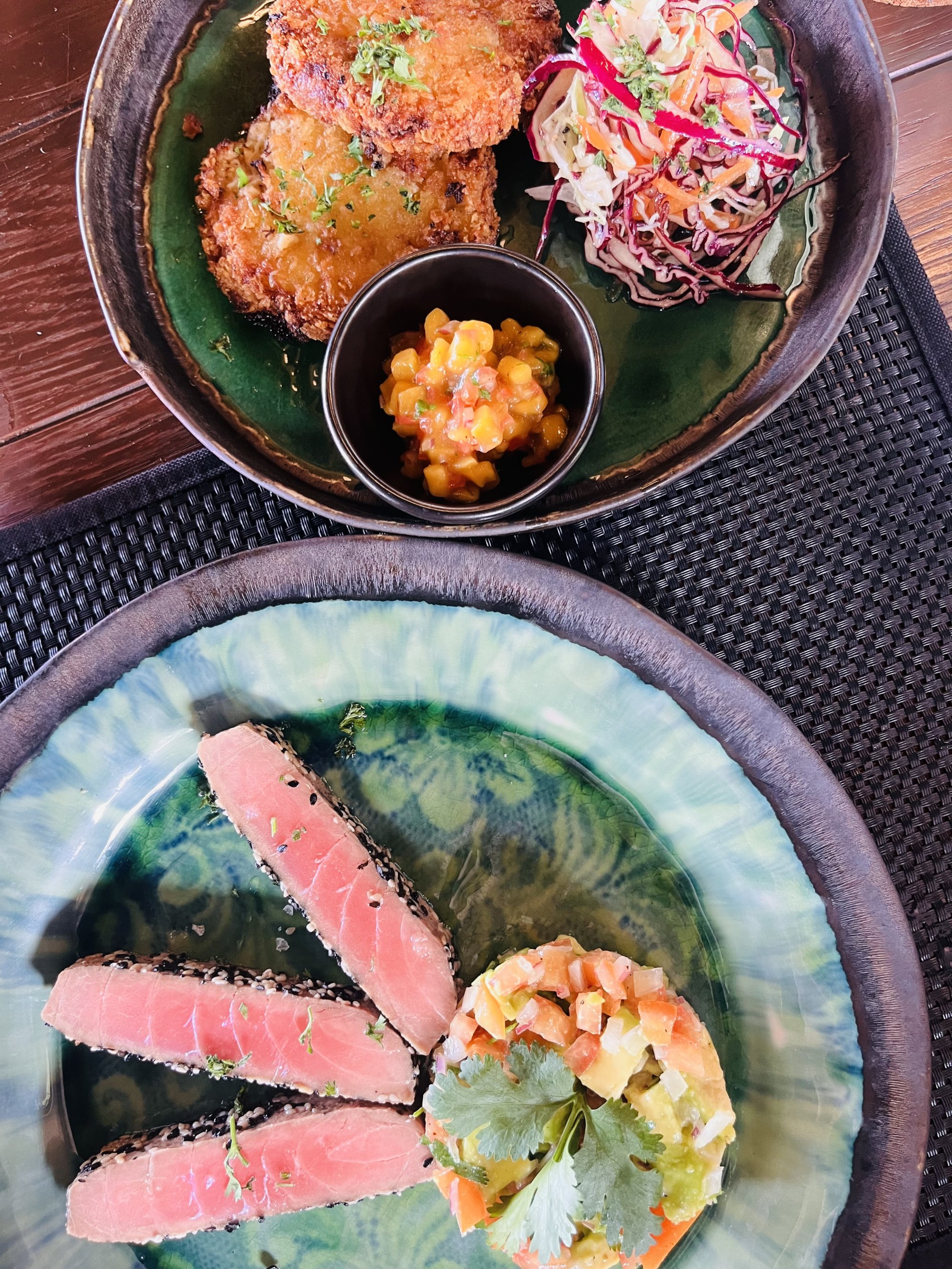 Seared tuna and crab cakes at The Fishhouse Restaurant & Bar at Kimpton Kitalay Samui. Photo: Kylie Knott
Seared tuna and crab cakes at The Fishhouse Restaurant & Bar at Kimpton Kitalay Samui. Photo: Kylie Knott
This seaside gem, located in the five-star Kimpton Kitalay Samui Resort, was recommended in the island’s first Michelin Guide in 2023.
Menu items include chilled seafood towers, spicy lobster, fish tacos, seafood bao buns, whole grilled fish, etc. The seared tuna with mango salsa and crab cakes are to die for.
10/79 Moo 5 Bophut, Choeng Mon, Koh Samui, Surat Thani 84320
Crab Shack
 Lobster roll at the Crab Shack at Anantara Lawana in Koh Samui. Photo: Kylie Knott
Lobster roll at the Crab Shack at Anantara Lawana in Koh Samui. Photo: Kylie Knott
Though the Anantara Lawana Resort oozes five-star luxury, the Crab Shack eschews fine-dining formalities, instead allowing guests to help themselves to seafood buckets filled with blue crab, prawns, mussels, clams, slipper lobster, calamari and scallops, and is more than happy to get dirty.
Don’t miss the lobster roll smothered in garlic butter.
Anantara Lawana Resort, Koh Samui, Surat Thani 84320
Tembo Beach Club and Resort
Owned by British Susan Field, who once ran a public relations agency in Hong Kong, this colonial-era beach club and resort is the best place to enjoy fresh seafood on Bangrak Beach.
The fish pie is a popular choice – barracuda, salmon, white prawns and vegetables in a creamy herb sauce topped with a cheesy potato bake – and be sure to try the spaghetti alle vongole, made with local clams.
23/2, Bangrak Beach, Bophut, Surat Thani 84320
Nam
Located in the luxurious W Hotel and helmed by innovative Executive Chef Takayuki Ono, Namu fuses Japanese and Thai flavours with dishes such as lobster udon and pan-fried scallops with wasabi pepper sauce.
D4, 1, Maenam, Amphoe, Koh Samui, Surat Thani 84330
Moonrise Beach Bar & Seafood
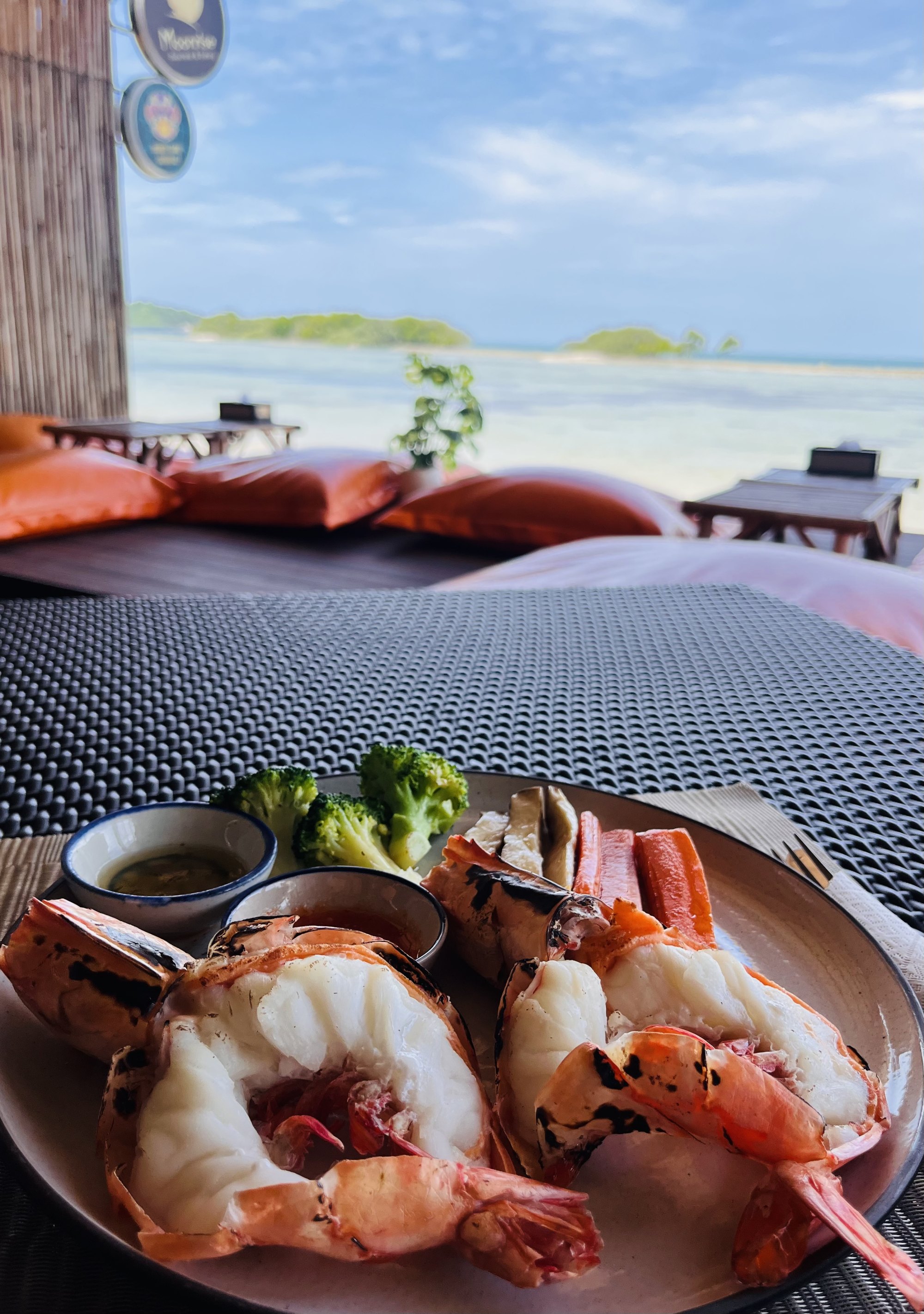 Seafood at Moonrise Beach Bar & Seafood in Koh Samui. Photo: Kylie Knott
Seafood at Moonrise Beach Bar & Seafood in Koh Samui. Photo: Kylie Knott
Overlooking Chaweng Beach, this funky spot offers great seafood and ocean views, and if you can’t find seafood to your liking on the extensive menu – which includes lobster, calamari, prawns and blue crab sourced from local fishermen – you’ll be hard pressed to be satisfied.
Or simply sit back and relax on the giant leather cushions while sipping on a happy hour cocktail.
Dara Tambon Bo Phut, Koh Samui District, Surat Thani 84320


